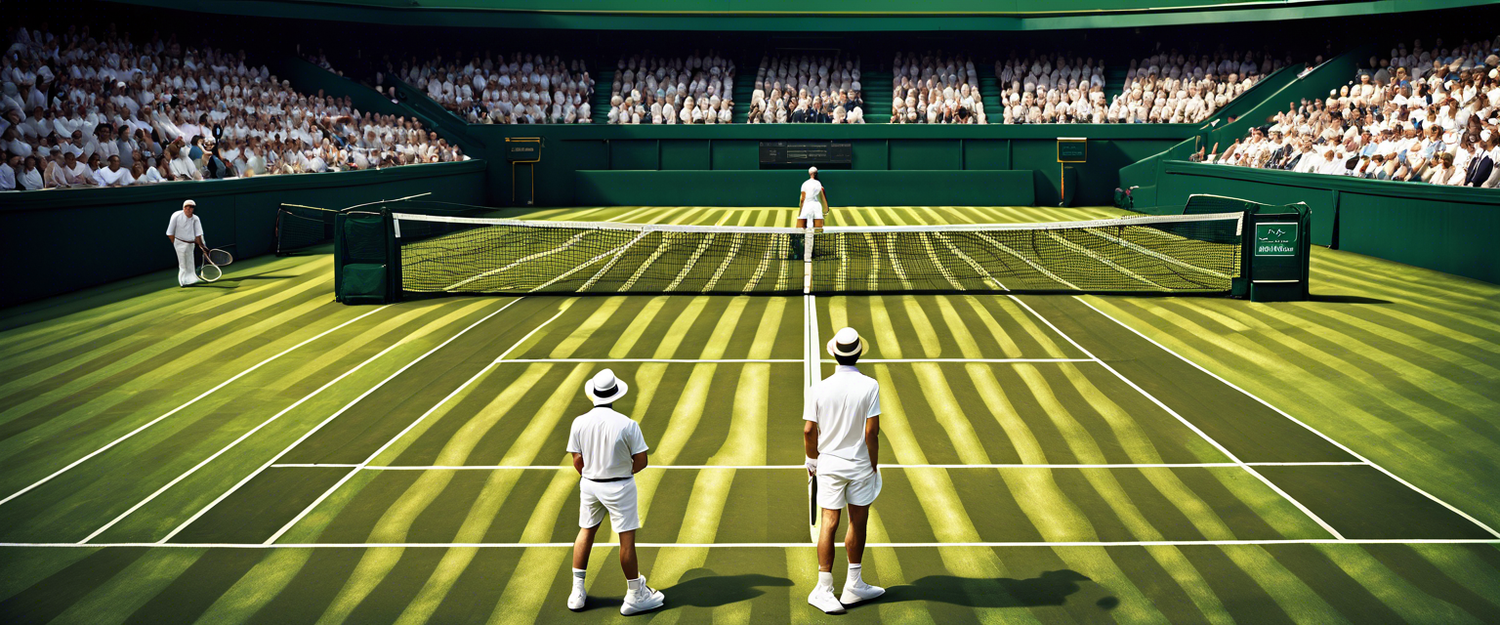Wimbledon Championships Set to Implement Electronic Line Calling System in 2025
The Wimbledon Championships, renowned as the most prestigious professional tennis event, has announced a significant shift in its officiating practices. Starting in 2025, the tournament will eliminate human line judges entirely in favor of an Electronic Line-Calling (ELC) system. This decision, first reported by The Times of London, signals a departure from a 147-year tradition, aligning with the broader trend in tennis towards increased technology-assisted officiating.
The Shift Towards Technology in Tennis
In 2023, the Association of Tennis Professionals (ATP) declared that all its events would transition to automated line calls. With Wimbledon adopting ELC, the French Open remains the only Grand Slam not yet to embrace this technological evolution. Previously, a match at Wimbledon was monitored by up to nine line judges, responsible for making precise in or out calls for their designated areas. Over the course of the two-week tournament, 300 judges typically oversee more than 600 matches.
Benefits of Electronic Line Calling
While the ELC system will reduce the number of on-court officials, the motivation is not merely to cut down on personnel. The introduction of technology aims to enhance the accuracy of line calls and overall officiating, particularly as many players have expressed concerns about human error during matches. The ELC system is believed to offer more reliable outcomes compared to traditional methods—although players like Jelena Ostapenko may hold differing views.
A Brief History of Electronic Line Calling
The history of electronic line calling in tennis dates back to the introduction of Hawk-Eye Live, a system featuring a network of cameras that tracks the ball’s trajectory to determine its landing position. Initially designed to provide entertainment for broadcast audiences, Hawk-Eye became a critical tool for officiating following controversial calls during a 2004 US Open match involving Serena Williams and Jennifer Capriati. Since then, Hawk-Eye has evolved to the point where it is now automated at the US Open, eliminating the need for player challenges.
Data Capture and Monetization
During matches, ELC systems collect extensive data—not only capturing the ball’s movement at 70 frames per second but also tracking player movements. This data serves to enhance the broadcasting experience with real-time statistics and insights on player performance. Additionally, it opens avenues for monetization through partnerships with sports betting companies. The ATP generates significant revenue from licensing ball and player tracking data, which is roughly equivalent to income from broadcast rights. Wimbledon is expected to benefit similarly once the ELC system is launched.
The Rise of Automation and Its Impact on the Game
As a longtime tennis fan, there’s a sense of nostalgia associated with the challenge system that Hawk-Eye once provided. The tension and drama of players disputing a call, culminating in a dramatic reveal of the ball’s position, added a thrilling layer to match play. This human element, seen in other sports like the NFL where coaches challenge calls, is something that may be lost with the rise of electronic officiating in tennis.
The Future of Officiating in Tennis
With the transition to ELC, tennis is moving decisively into an era where technology dictates officiating decisions. This shift aims to streamline the game and improve accuracy, yet it raises questions about the role of human referees in the sport. As more tournaments adopt similar systems, fans may be left yearning for the excitement that comes from human mistakes and the chance for players to challenge those errors.
In conclusion, while the ELC system promises enhancements to the officiating accuracy and efficiency, it may also remove some of the drama and human element that has long been part of tennis. As Wimbledon embarks on its journey into this new territory in 2025, the implications for the sport and its fans remain to be seen.



Laat een reactie achter
Alle reacties worden gemodereerd voordat ze worden gepubliceerd.
Deze site wordt beschermd door hCaptcha en het privacybeleid en de servicevoorwaarden van hCaptcha zijn van toepassing.